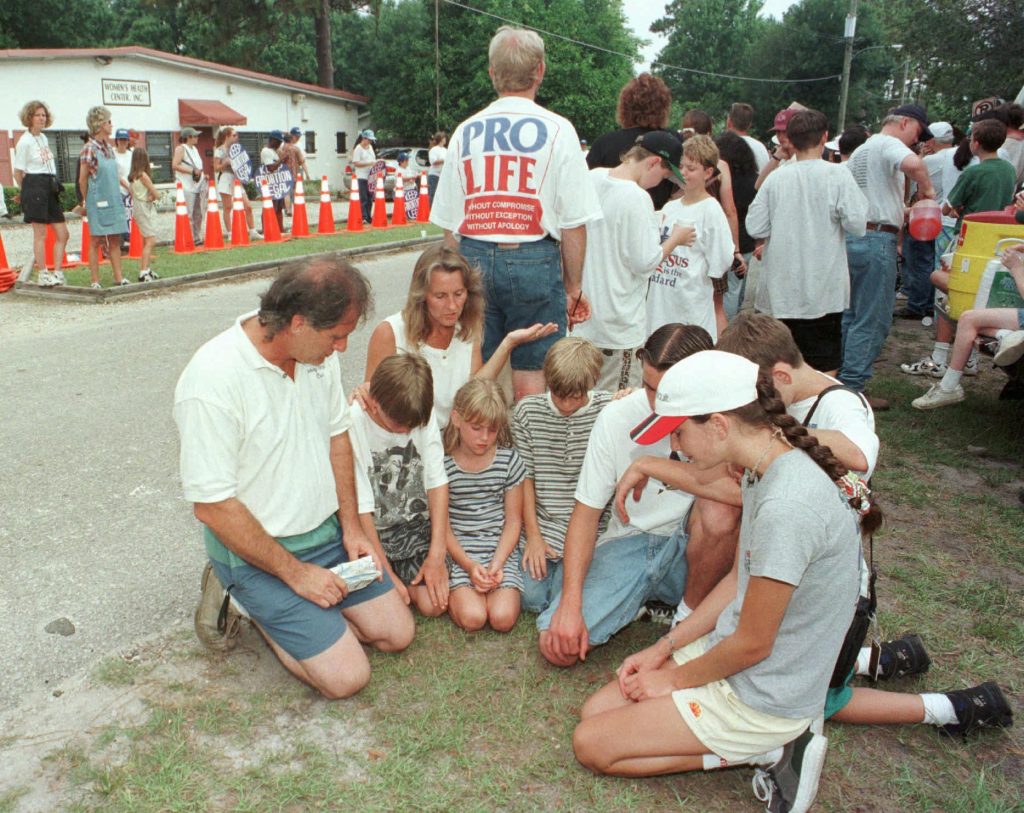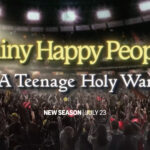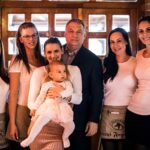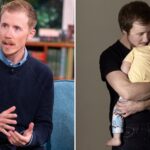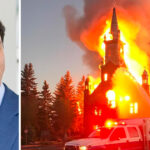Blog Post
The Backlash: How Christians rose up to fight the Sexual Revolution
By Jonathon Van Maren
My introduction to this series on the 20th century, “The Century that Changed Everything,” can be found here. Part I is “The World Before the War”. Part II, “How the Great War transformed Western civilization–and is still with us today,” can be found here. Part III, “The Second World War: Saving Christian civilization from Hitler’s Reich,” can be found here. Part IV, “The Shoah: The murdered multitudes and the righteous few,” can be found here. Part V, “An eyewitness to the birth of Israel and the Convoy of 35 speaks,” can be found here. Part VI, “America versus the Evil Empire, can be found here. Part VII, “Vietnam: The War that transformed America,” can be found here. Part VIII, “How the last great Christian social reform movement of the 20th century defeated segregation,” can be found here. My essay “The forgotten and misunderstood history of the Sexual Revolution” can be found here. Part IX, “After the Revolution: How the West really lost God,” can be found here. This is the 10th installment in this series.
***
The history of the sexual revolutionaries is a favorite topic of our cultural tastemakers, and over the past several decades Hollywood has produced a nonstop stream of hagiographies lionizing those who made up the movement to smash down our moral boundaries. The sex criminal Alfred Kinsey has gotten the blockbuster treatment (played by Liam Neeson), as has statutory rapist Harvey Milk (Sean Penn) and abortion activist Gloria Steinem (Julianne Moore). Conversely, those who opposed them are demonized as reactionary racists and misogynists struggling to avert a new moral order that promised liberation for all. Most recently, the Hulu series Mrs. America portrayed the feminists and the abortion movement as heroic underdogs while slandering Phyllis Schlafly, the pro-life activist who rallied an army of housewives to stop the Equal Rights Amendment, as cynical and vicious bigot.
Ross Douthat recently observed that recent American history can be roughly divided as follows: A moral revolution from 1964-70 followed by the Me Decade and total chaos from 1970 to 1980; an attempted conservative counter-revolution from 1980 to 1990, followed by an attempted bourgeois liberal synthesis from 1998 to 2015 and an attempted establishment of a left-wing moral order beginning roughly in 2014 (and still ongoing.) In her 2017 book The Global Sexual Revolution, Gabrielle Kuby details how this moral revolution swept around the world and scholars such as Mary Eberstadt, Robert P. George, and Judith Reisman (among many others) have done incredible work tracing the revolution’s roots, spread, and rise to cultural dominance. But what is rarely examined is the backlash to this moral revolution, which occurred everywhere the revolution arrived.
The story of this backlash, which gave rise to the pro-life and pro-family movement, is incredible—but it is rarely told. In the progressive telling of history, the Sexual Revolution was a liberation, and those who fought—and fight—back are simply reactionaries who needed to be crushed. This backlash continues today—the Irish pro-life movement kept abortion out of Ireland for 35 years, saving the lives of roughly 5% of the existing population (a story I tell in my recent book Patriots: The Untold Story of Ireland’s Pro-Life Movement), and a massive Blue Wave Movement of millions is pushing back against abortion activists across South and Latin America. Wherever the moral revolution manifested, those who stubbornly refused to abandon the defence of innocent life and throw away the traditions of faith and family fought back. This backlash was complicated, messy, and often flawed—but despite that, I believe that many of the men and women who stood up to defend their heritage are unsung heroes deserving of recognition.
One day, I’d like the opportunity to write a full-length book on the history of the backlash across the West. There are a handful of books that do so—Michael Wagner’s Standing on Guard for Thee: The Past, Present, and Future of Canada’s Religious Right is excellent, and a number of veteran activists in the United States have produced valuable memoirs (including Joe Scheidler, Jack Wilke, Bernard Nathanson, and Monica Miller), but there is thus far nothing comprehensive. Pro-life activists rarely write histories of their own movements, and thus the only histories that do exist are generally written by our ideological opponents, although several veteran activists have told me that James Risen’s fascinating Wrath of Angels: The American Abortion War is very close to accurate. History is often written by the victors, but the legions who made up the backlash to the revolution deserve to be remembered—especially as their successes and failures have so much to teach us that is relevant today.
***
As Mary Eberstadt pointed out in How the West Really Lost God, the years immediately following the Second World War gave no indication that a moral revolution was coming. Billy Graham, then a young evangelist, was attracting thousands to tent revivals and open-air religious crusades. People were having large families and flocking back to church. But then came the Sexual Revolution of the 1960s, which produced what Robert Putnam calls “a prudish aftershock of growth in conservative religion, especially evangelicalism, and an even more pronounced cultural presence for American evangelicals, most noticeably in the political arena.” In his titanic 2012 study American Grace: How Religion Divides Us, Putnam explained: “As theological and political conservatism began to converge, religiously inflected issues emerged on the national political agenda, and ‘religion’ became increasingly associated with the Republican Party.”
Most pro-lifers do not realize that abortion was remarkably common early in American history (Marvin Olasky details this in his essential book Abortion Rites: A Social History of Abortion in America), and was first banned in the 1800s, when Protestant doctors persuaded state legislatures that permissive attitudes towards abortion were actually out of step with medical science that conclusively proved that a unique human life begins at conception. In 1967, Colorado legalized abortion in a handful of circumstances. South Carolina, California, Oregon, and New York followed suit. Despite that, when Roe v. Wade forced legal abortion on all fifty states on January 22, 1973, abortion was illegal in nearly all circumstances in 32 states.
The Catholics were first on the scene, pushing back. Fundamentalists and evangelicals had largely stepped out of the political arena after the failure of Prohibition and the 1925 Scopes Monkey Trial, sticking to their own communities and subcultures. Roe came and went with little protest from conservative Protestants, and Billy Graham even shamefully told William F. Buckley in a 1969 episode of Firing Line on “The Decline of Christianity” that he thought the law should be changed to legalize abortion in the case of sexual assault. Right to Life organizations began to form, and left-wing Catholics who had cut their teeth on Ban the Bomb marches (such as John Kavanaugh O’Keefe) began engaging in civil disobedience outside abortion clinics, fueled by their “whole life ethic” that saw abortion as every bit as violent as the wars they protested. Driven by their belief in human solidarity and inspired by the recent successes of non-violent movements led by Gandhi and Martin Luther King Jr., a handful of them began to get arrested in front of clinics.
***
The backlash would also permanently transform the American political landscape. In 1972, the Republican Party platform did not contain a single reference to God, not because the GOP was disinterested in religion, but rather because America’s religiosity was taken for granted. That was the year that Phyllis Schlafly, an intimidatingly brilliant Catholic housewife from Illinois, decided to go to war against the Equal Rights Amendment. Relying on an enormous network of women she built through years of newsletter-writing and politicking, she marshalled the forces of traditionalism and set them in array against the revolutionaries. When she began her campaign, the ERA had already been ratified by 28 of the 38 states needed to amend the Constitution. Only seven more states ratified after STOP ERA began—and five states rescinded their ratifications. The ERA—and the abortion activists—failed. Even now, progressives are still struggling to achieve this goal—Nevada, Illinois, and Virginia ratified the ERA between 2017 and 2020, decades after the official deadline to do so had passed.
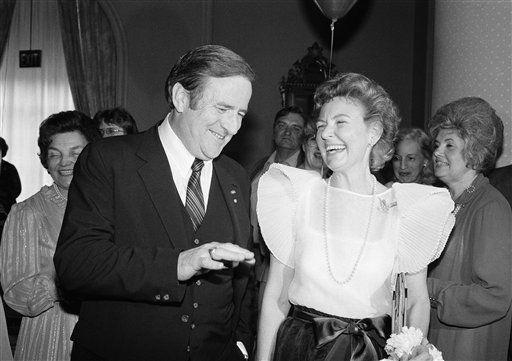
Besides Schlafly’s stunning political success in defeating the ERA, she also worked to ensure that the GOP became a pro-life party (an effort she described to me in a 2014 interview shortly before she passed away.) Consequently, the first mention of abortion showed up in the 1976 Republican platform, calling for “a position on abortion that values human life” and asserting that “our great American Republic was founded on the principle: One nation under God, with liberty and justice for all.” With the founding of Focus on the Family by Dr. James Dobson in 1977 and the Moral Majority by Rev. Jerry Falwell of Lynchburg, Virginia in 1979 and the key role played by Christians in the election of Ronald Reagan, abortion became a hot political topic and the backlash to the excesses of the Sexual Revolution and other aspects of America’s social transformation was underway in earnest.
The 1980 GOP platform actually promised a Human Life Amendment to the Constitution, an explicit recognition of the rights of pre-born children. Francis Schaeffer, a Presbyterian theologian famous for his L’Abri community in Switzerland, published A Christian Manifesto in 1981, calling on American Christians to fight back against secularization, utilizing civil disobedience where necessary. It sold 290,000 copies in the first year and became a founding document of the Religious Right.
***
In 1986, 27-year-old Randall Terry launched Operation Rescue, an organization dedicated to sit-ins and obstruction outside abortion clinics in Binghamton, New York, guided by a simple slogan: “If abortion is murder, act like it.” The concept of rescue—physically obstructing abortion clinics to prevent abortions from taking place—had already been pioneered by Catholic leftists. Randall Terry would fuse these ideas with the concept that Christians were personally responsible for abortion, and that “rescue” was a physical act of repentance for apathy in the face of rampant bloodshed. Francis Schaeffer had written that every abortion clinic should have a sign in front of it reading “here by permission of the church”: Terry stated that anybody who wanted to understand the rescue movement needed to read A Christian Manifesto. Operation Rescue launched a movement that would result in more than 70,000 arrests—nearly double the number of the Civil Rights movement—and take America by storm.
A few years after I joined the pro-life movement, I realized that nearly every leader older than myself had cut their teeth in the rescue movement. In Lynchburg, Virginia, my wife and I spent a wonderful evening with Dr. Karen Swallow Prior going through her massive archive of newspaper clippings and other Rescue paraphernalia from her time on the frontlines, which included getting arrested in Buffalo, New York. Randy Alcorn, author of Pro-Life Answers to Pro-Choice Questions (and many novels) got arrested and sued in Oregon, and John Piper and his wife got heavily involved in the rescue movement in Twin Cities, Minnesota. Between 1977 and 1989, police made 24,000 arrests at 385 rescues. Tens of thousands of people were willing to risk police brutality, fines, arrest, and even jailtime to stop abortion. As one rescue veteran who drove across the Canada-U.S. border to join them told me: “We just wanted to get between the babies and the killers.”
Bill Calvin, one of the veteran pro-lifers who helps organize anti-abortion campus outreach each winter in Florida, was recruited to join Operation Rescue as it geared up. He lived in New Jersey at the time and led teams into New York City each morning to lay siege to abortion clinics. At around 3 AM, he’d get a call, and rescuers would begin to train in from Manhattan, Westchester, Long Island, and elsewhere. The first week of rescues in New York City in May of 1988 brought out hundreds. The first day, Calvin told me, the rescue was outside a doctor’s office off Lexington Avenue on the Upper East Side. “I remember getting off the Lexington Avenue Subway, and as I walked out of the train station, I could hear a thousand people singing ‘Amazing Grace,’” he recalled. “Believe me, that doesn’t happen often in New York City.”
Calvin was a police commissioner in New Jersey (and an engineer for Exxon), and one of his duties was to speak with the police who responded to calls from the abortion clinics. One of the officers told him that as a young cop, he’d served on the abortion squad, shutting down illegal abortion clinics. He’d been to the same doctor’s office the rescuers were protesting in that capacity. Now, with abortion legalized, he was protecting the same places he’d once been sent to shut down. “One time at Cherry Hill [in Albany] at a very large rescue, Randall Terry asked me to challenge the policemen,” Calvin remembered with a chuckle. “I stood up and talked to them about how any of them would dive into the Delaware River to save a child’s life, and that’s what we were doing. That didn’t stop them from arresting me after I was done my talk.”
Many pro-life policemen struggled with the assigned task of arresting rescuers. “There were lots of good policemen,” Calvin recalled. In one instance, an enormous African American lieutenant came over to Calvin and his wife, who had health problems, as they were sitting on the bus after being arrested. He begged them to get off the bus, as he wanted Calvin’s wife to go back to the hotel where she could rest. He finally succeeded in releasing them from the bus, “and we didn’t get processed that day.” A motorcycle cop in Las Vegas who was privately organizing rescues finally joined in himself one Saturday morning, showing up in uniform. He was arrested, and after years of litigation, lost his job. After news articles about his involvement turned up in the newspapers, Calvin promptly lost his next election as police commissioner.
Following the rescues in New York City, Operation Rescue descended on Philadelphia for the Fourth of July celebrations, focusing on the proximity of abortion clinics to America’s great historical sites. Hundreds showed up for several days. Bill was there with his wife. His pretty blonde 16-year-old daughter approached them at the clinic to ask where she’d be staying while her parents were getting arrested and processed. Randall Terry, Calvin recalled, mistook her as a girl coming for an abortion and began “haranguing her at the top of his voice.” She retreated. Approaching again later, Terry started preaching at her once again, and she glared at him, climbed over the police barrier, and informed him: “No, I’m not here for an abortion. My mother and father are about to be arrested, and I’m about to join them.” She sat down with her parents, and they were arrested as a family.
Later that month, Operation Rescue upped the ante in an event that would be dubbed the Siege of Atlanta. Thousands of pro-lifers converged on the city for the Democratic National Convention. Randall Terry put out a call for action, stating that only a few days would be necessary. Abortion clinics across the city were swarmed and shut down.
In Atlanta, Operation Rescue unveiled new tactics as the protests stretched from days into six months. For example, when pro-lifers were arrested, they would refuse to provide their names in solidarity with aborted children. “They would say: My name is Baby John Doe or Baby Jane Doe,” Calvin recalled. “That frustrated the jail officials, and that became part of the message—that we were identifying with the babies that had no names and had nobody to stand up for them. I went down there a month later and participated in a rescue, and when they took us to jail, they put wrist bands on us and my wrist band said: ‘Baby John Doe #656.’” It was the first sign that the rescues might not be as swift and simple a proposition as Randall Terry had initially advertised. Pro-lifers were not only arrested, but often imprisoned for weeks and months—and some were sent to work camps. Calvin says that many expected only a few days and hadn’t “counted the cost” when the rescues collided with the force of the state.
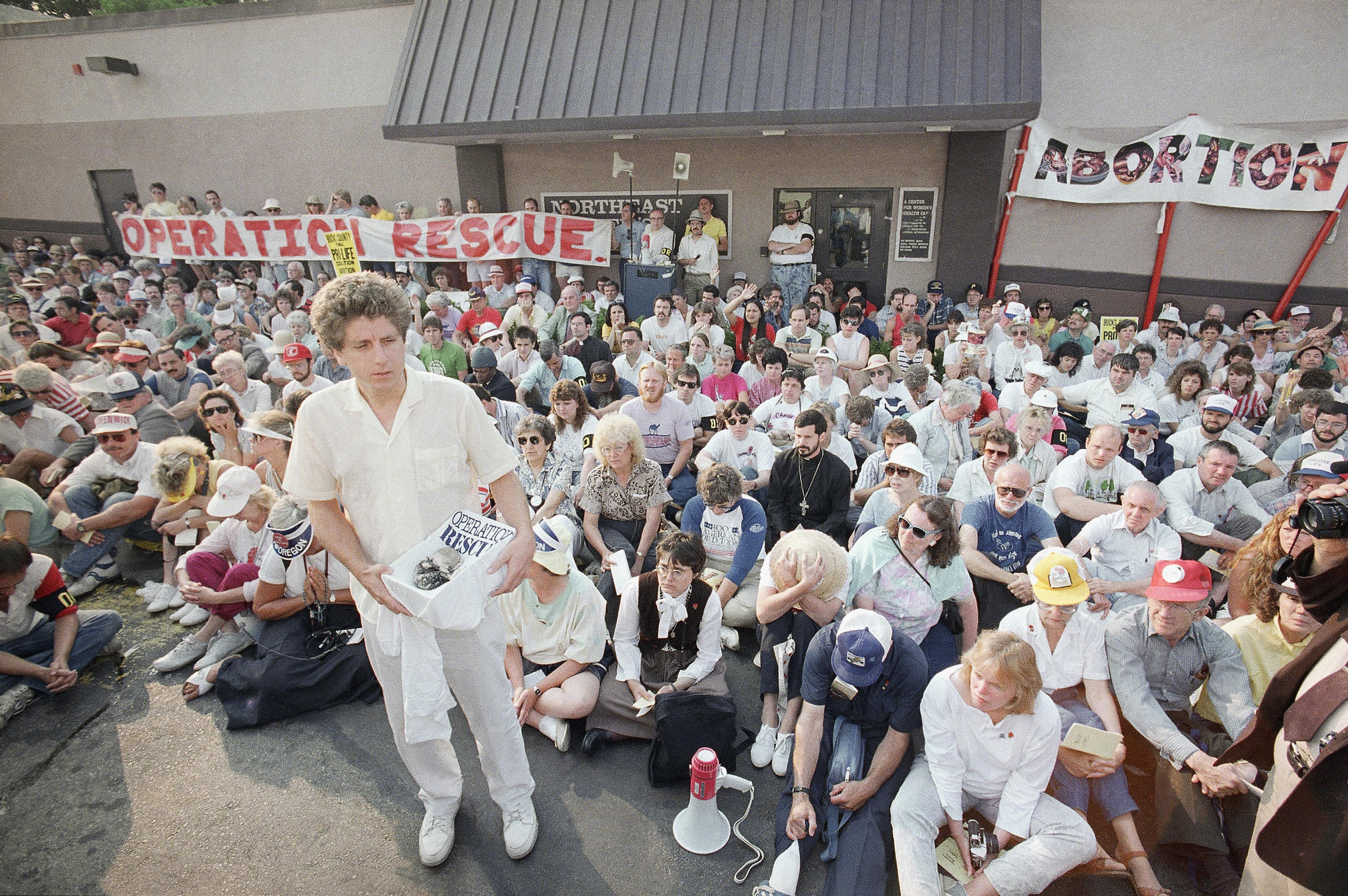
Still, the Siege of Atlanta was a galvanizing moment as anti-abortion protests captured national attention. Rev. Patrick Mahoney told me that there “was an amazing electricity in the air” during the Siege, which was when he first got involved (later becoming one of Operation Rescue’s leaders.) Randall Terry had first called Mahoney back in 1985, when he was serving as a pastor in Connecticut, but Mahoney had found him “energetic and positive but a little rough.” They didn’t talk for several years, although Mahoney was involved in other pro-life rescues. Joining the national movement, he told me, “was empowering and energizing on two levels. For me personally, having been involved in peaceful interventions at clinics with only two or three people—in fact, my wife led one in 1985 where she had my ten-month-old daughter—my daughter was the youngest person arrested in American history. It was incredible to see the commitment and passion of so many people.”
Both Mahoney and Calvin pointed to the incredible commitment of everyday people who simply understood what abortion really was. Ordinary Americans—insurance salesmen, teachers, homemakers, mechanics—were coming out and putting it all on the line, risking arrest. This was even more extraordinary considering that most of these people were drawn from the faction of society that would ordinarily be considered supportive of law and order. “It was incredible to see the hundreds of people willing to risk arrest in Atlanta, the thousands of people who came out to the rallies, the energy that was beginning to move, this spark that ignited in people’s hearts,” Mahoney recalled. “What can we do to end abortion? What could happen if thousands of people knelt peacefully in front of abortion clinics to save lives?”
The Religious Right threw their lot in with Operation Rescue, fueled by the philosophy laid out by Francis Schaeffer. Jerry Falwell wrote them a cheque for $10,000 and hosted a press conference announcing his support for their tactics. Branches of Operation Rescue were cropping up across the country. Jeff White, a Californian who became convicted about abortion after attending a screening of The Silent Scream at church, saw a video of the Cherry Hill rescues and decided to join. He flew to New York City in April of 1988, the first time he’d been away from his wife longer than overnight. He was staying near Times Square in a shoddy hotel room that featured a urine-stained mattress and three other rescuers and decided to head out for a walk. On the sidewalk, he bumped into several other men, who asked him what he was up to. He was in town for the rescues, he told them. “Good, we need more leaders,” they informed him. “Come inside.” He was pulled off the street in New York City into a strategy meeting with Joseph Foreman, Randall Terry, and other leaders. It would change the course of his life.
During the Siege of Atlanta, White was launching the first rescues in the San Francisco Bay area. One of the tactics used by police to clear abortion clinic entrances was to grab people and drag them away from the doors. In response, the rescuers developed a tactic that was dubbed “the Foreman Crawl,” heading back to the doors on hands and knees as soon as the police dropped them. This would cause anger, and rescuers were sometimes beaten by the police—arms were twisted, and even snapped with nun-chucks. The Foreman Crawl, White told me, was designed so that it would be impossible to accuse the rescuers of assaulting the police. At one point, he recalled, he saw a young woman, Cheryl Conrad, getting billy-clubbed by the police, bleeding and obviously in pain. Still, she crawled back. “That was the essence of the spirit of rescue. Your safety wasn’t important. If those doors opened, babies would die.”
Conrad’s path to the pro-life movement was a hard one. She had an abortion before she was married, and a year later, she had to do a project on abortion for a college class. Doing research at a crisis pregnancy center, she saw a photo of an abortion victim. That was the beginning of her healing—and her involvement in the movement. She started volunteering at a center as a counselor, and her family hosted girls in crisis pregnancies. She first heard about what was going on in Atlanta from her mother, who was concerned that she might become one of “those crazy people.” Her fellow volunteers at the center discussed whether the tactics were valid. Then, she heard a speech on Easter Sunday in 1989 from wives whose husbands had been arrested during rescues. She decided to join, helping to block the doors at a clinic in Inglewood, California in April of 1989—despite the fact that being arrested and strip-searched was her worst fear. “It was something I felt very called to do, whatever the cost was going to be,” she told me.
The high-water mark of Operation Rescue took place in Wichita, Kansas in 1991 in an event known as the Summer of Mercy. By this point, Keith Tucci had taken over from Terry, and thousands of pro-lifers flooded into the city to shut down late-term abortionist George Tiller’s clinic, among others. Hundreds of pro-lifers blocked the doors of Wichita’s three clinics in an event that was supposed to last one week but ended up lasting nearly seven. At least 1,781 rescuers were arrested, several of them many times, supported by both the governor of Kansas and the Justice Department of President George H.W. Bush. The Summer of Mercy culminated in a massive rally attended by 25,000 people. Mahoney remembers headlining a pro-life rally of 5,000 the following year. In the front row, he told me, were 110 people—mothers who had kept their babies as a result of the Summer of Mercy. Troy Newman, who currently leads Operation Rescue (which now focuses on shutting down clinics through investigative work), would officiate the wedding of someone saved during the Summer of Mercy years later.
There is still debate about why precisely this extraordinary historical movement came to an end. There was the spate of violence—condemned by the pro-life movement’s leaders—by extremists such as James Kopp, who was eventually convicted of the 1998 murder of abortionist Barnett Slepian. There were the mounting fines and jailtime as authorities lost patience and began to crack down. “King almost never violated federal injunctions,” said Mahoney, who ended up in jail in Wichita. “We violated federal injunctions on a regular basis. My poor wife—I think we had enough paper from federal lawsuits to replace the rainforest in Brazil.” Mahoney still owes millions in fines. Jeff White would eventually spend a combined year and a half in prison. And Bill Clinton’s election and the subsequent passage of the Freedom of Access to Abortion Clinic Entrances (FACE) Act would stop much of the movement cold.
(Interestingly, I know for a fact that Clinton has seen what abortion does to pre-born children. My friend Lynn Mills, the pro-life activist and investigator who uncovered the evidence leading to Jack “Dr. Death” Kevorkian’s arrest, told me that she met Clinton at a campaign rally and slipped a small photo of an aborted baby into his suit pocket while he shook her hand. Additionally, a pro-life activist actually approached Clinton while he was jogging prior to the 1992 Democratic National Convention and showed him an aborted baby. Clinton pursued pro-abortion polices with his eyes wide open.)
But Operation Rescue had re-energized the movement. Texas activist Mark Crutcher of Life Dynamics, an organization that exposes the corruption of the abortion industry, told me that Operation Rescue saved a flagging pro-life movement. When Pat Mahoney first got involved in the late ‘70s, a frequent joke among the pro-life activists went thusly: What do you call a pro-life rally made up of sixty-year-olds? A youth rally. “Our goal was to get to a rally without losing somebody,” he told me with a laugh.
Talking to rescue veterans now, they all bring up the same thing: The number of lives saved. In addition to hard data which indicates that the presence of people outside a clinic reduces the number of people willing to go inside, there was the fact that many clinics would simply close for the day if they discovered that a rescue was planned. There were also extraordinary, hard-to-believe stories. Mahoney remembers one instance where parents had traveled to another city to join a rescue—and came face to face with their daughter outside the clinic, arriving for an abortion. They begged her to change her mind, and she decided to keep the baby—their grandchild. “Thousands of babies were saved,” Jeff White told me. “Thousands. It was an example of the church in the streets.”
“For me, it was all about saving lives,” Bill Calvin agreed. “One of the ways we described what we did was buying time for the sidewalk counselors. There are many, many documented incidents of women who came to abortion clinics, saw the crowd, talked to the sidewalk counsellors, and changed their minds. Some of us have gotten to hold those babies. By doing this, we showed how important the babies were. The babies are important enough to pay a price.” At one big abortion clinic in the Bronx, he recalled, a football player from the New York Giants got arrested with them—and he and Calvin’s daughter later drove a girl who changed her mind across state lines to get her to a crisis pregnancy center.
Patrick Mahoney still does pro-life work and is involved in many other causes. I first met him at a conference in California hosted by the pro-life group Survivors, which is led by Jeff White and Cheryl Conrad. Bill Calvin, in his 70s, still organizes pro-life activism on campuses across America, and has headed across the border to work with the Canadian Centre for Bio-Ethical Reform, as well. The legal movement that began in response to the need for pro-life lawyers, Calvin says, was the basis for much of the free speech defence we see today. The rescue movement’s leaders and activists formed the backbone of the pro-life movement heading into the 1990s, and their passion and commitment is as necessary today as it was then. They were part of a backlash to abortion that put thousands in the streets, and they sent America a simple message: The babies are worth fighting for.
***
Operation Rescue was a microcosm of something else, as well. Traditionally, there had been deep divides between Catholics and Protestants, but the culture wars gave birth to something Chuck Colson would call “the ecumenicism of the trenches.” John Richard Neuhaus, who laid out his vision for an America undergirded by Judeo-Christian values in his seminal 1984 work The Naked Public Square, worked with many other traditionalist intellectuals to create this coalition of shared values, founding the journal First Things to give the coalition a voice. (Damon Linker’s 2006 book Theocons: Secular America Under Siege lays out where they succeeded. He condemns the project, but it is a cheery read for Neuhaus’s supporters.) The old Protestant-Catholic divides have, politically, all but vanished. The doctrinal and dogmatic differences are as stark as they ever were, but on religious freedom, the sanctity of human life, marriage, and sexuality, traditionalists of every stripe have found common cause.
During the Bush years, it appeared that social conservatives had once again gained the upper hand. The pro-life movement was growing and energized, with a new generation of activists joining the cause. George W. Bush was an evangelical, and promised to defend traditional marriage, children in the womb, and an America infused with Christian religiosity. Instead, 9/11 and a series of foreign policy blunders turned his into a war presidency, and we will never know what his administration could have been. With Barack Obama came an ascendent and increasingly radical progressive Left, and the revolutionaries pressed their advantage. Obergefell toppled marriage statues across America, the redefinition of gender began, and woke progressivism metastasized from a political ideology into a religion. As Ross Douthat noted, the Judeo-Christian founding of America is not simply under attack. We are witnessing an attempt to replace it with something far, far different. And yet—the backlash continues.
There is too much history and too many stories to do the backlash to the Sexual Revolution justice here, and so I have attempted to merely scratch the surface. In America, across the West, and around the world, millions of men and women still look with clear eyes at the Sexual Revolution and pronounce their verdict: No. We will not raise our families this way; we will not accept these values; we will not stay silent in the face of the destruction of millions of innocent lives; we will not join in the degradation of human dignity and the destruction of our collective heritage. If the culture wars must, at the end of the day, be lost, then this heritage will live on in enclaves of families who will, as Flannery O’Connor once put it, push back as hard as the age pushes against us. Mary Eberstadt has noted that soon, we will enter an era where everyone who remembers life before the Sexual Revolution will be gone.
I almost agree with that. We who are part of the backlash to the Revolution can raise our families the same way our parents, grandparents, and great-grandparents raised theirs. Hopefully, we will teach our children the stories of those ordinary men and women who fought back against the destruction of their heritage and declined lives of comfort for lives of defiance. We will read them great books, and when we do, we will discover passages like this, from Tolkien’s Return of the King:
There, peeping among the cloud-wrack above a dark tor high up in the mountains, Sam saw a white star twinkle for a while. The beauty of it smote his heart, as he looked up out of the forsaken land, and hope returned to him. For like a shaft, clear and cold, the thought pierced him that in the end the Shadow was only a small and passing thing: there was light and high beauty for ever beyond its reach.


